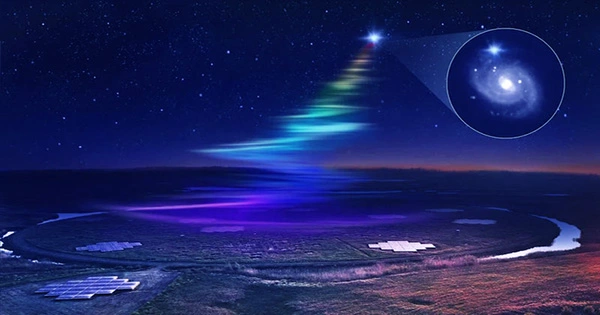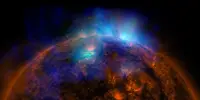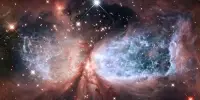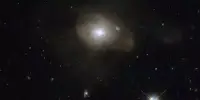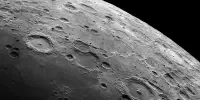Astronomers have discovered the shortest fast radio bursts (FRBs) ever observed, with the shortest lasting only five microseconds – a thousand times shorter than a regular FRB. The bursts are thought to have come from a galaxy three billion light-years away, but their precise nature is unknown.
FRBs are enigmatic, strong bursts of radio waves that originate outside the galaxy. Since their discovery in 2007, it has been unclear what causes these bursts. Despite this, it is estimated that about 10,000 FRBs reach Earth every day.
An FRB typically lasts a few milliseconds, but in 2022, scientist Kenzie Nimmo of the Netherlands Institute for Radio Astronomy (ASTRON) and colleagues discovered evidence for bursts on considerably shorter durations. This was discovered within the bursts of a repeating source known as FRB20200120E, and it prompted scientists to ponder whether far shorter period FRBs may exist independently of any larger bursts.
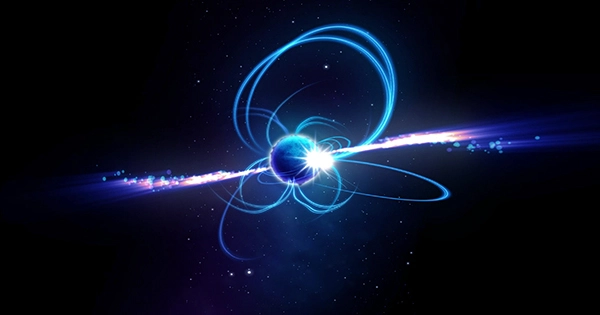
To find it, the researchers from the Netherlands and the United States meticulously combed through existing observations of the repeating source FRB 20121102A made by the Green Bank Telescope in West Virginia, which boasts the world’s largest steerable dish at 110 meters. The researchers discovered 19 new bursts, eight of which were extremely brief, separate bursts lasting between five and fifteen microseconds.
“Despite having drastically shorter temporal durations, these ultra FRBs very much resemble the much broader bursts,” said main author ASTRON astronomer Mark Snelders, who is also a University of Amsterdam professor, in a statement to Physics World. “We found that a lot of the properties are the same.”
It is unclear whether the result favors a specific model for FRBs, such as a flaring magnetar or an accreting black hole jet. “The discovery would support an emission region close to the magnetosphere of a magnetar or black hole jet, rather than some external location, such as a shock,” said Columbia University theorist Brian Metzger, who was not involved in the study.
However, as Metzger points out, the FRB time structure could represent an influence of the surrounding environment on the transmission of the FRB rather than an intrinsic attribute of its source. FRB 20121102A is located in a dense, magnetized nebula, and it was recently demonstrated that propagating a FRB wave across this region could modify its time structure via self-modulation, resulting in “pancake-like” bursts on microsecond durations.
Missing fraction: This revelation may instead inform us about the FRB’s environment rather than the source itself. “I think the jury is still out on where the FRB emission originates and what this implies for the central engine,” Metzger adds.
The discovery also suggests that the estimate of 10,000 FRBs reaching Earth per day may need to be revised upwards. “I believe we are missing a significant fraction of all the FRBs that have hit Earth,” Snelders says. Because of the massive computational resources required, these short events were previously not thoroughly searched for.
FRBs’ varied frequencies become blurred out across several seconds as they travel through the interstellar medium. Detecting these incredibly short bursts hence necessitates first correcting this impact by conducting an exceedingly expensive computation known as “coherent de-dispersion.”
Indeed, the researchers merely searched 30 minutes of data in the most recent work, which nevertheless required several months of processing. Despite this, Snelders remains unconcerned. “Our research group is definitely going to change our observation and search strategy for future projects, and other research groups should do the same,” he says.
